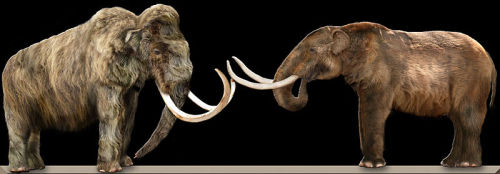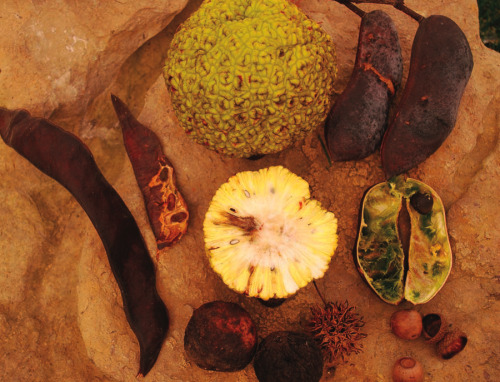rhamphotheca:The Trees That Miss The MammothsTrees that once depended on animals like the wooly mamm
rhamphotheca:The Trees That Miss The MammothsTrees that once depended on animals like the wooly mammoth for survival have managed to adapt and survive in the modern world.by Whit BronaughWarning: Reading this article may cause a whiplash-inducing paradigm shift. You will no longer view wild areas the same way. Your concepts of “pristine wilderness” and “the balance of nature” will be forever compromised. You may even start to see ghosts.Consider the fruit of the Osage-orange, named after the Osage Indians associated with its range. In the fall, Osage-orange trees hang heavy with bright green, bumpy spheres the size of softballs, full of seeds and an unpalatable milky latex. They soon fall to the ground, where they rot, unused, unless a child decides to test their ballistic properties.Trees that make such fleshy fruits do so to entice animals to eat them, along with the seeds they contain. The seeds pass through the animal and are deposited, with natural fertilizer, away from the shade and roots of the parent tree where they are more likely to germinate. But no native animal eats Osage-orange fruits. So, what are they for? The same question could be asked of the large seed pods of the honeylocust and the Kentucky coffeetree.To answer these questions and solve the “riddle of the rotting fruit,” we first need to go to Costa Rica. That is where tropical ecologist Dan Janzen of the University of Pennsylvania noticed that the fruits of a mid-sized tree in the pea family called Cassia grandis were generally scorned by the native animals, but gobbled up by introduced horses and cattle. Janzen, who received the Crafoord Prize (ecology’s version of the Nobel) for his work on the co-evolution of plants and animals, had the idea that the seeds of Cassia grandis, and about 40 other large-fruited Costa Rican trees, were adapted to be dispersed by large mammals that are now extinct. He teamed up with Paul Martin, a paleoecologist at the University of Arizona, to develop the concept of ecological anachronisms…(read more: American Forests)images: mammoth/mastodon reconstruction by Dantheman9758 | Wikipedia; fossil photo by Wolfmansf | Wiki; plant photos by Mark Wells and Dxlinh -- source link
Tumblr Blog : rhamphotheca.tumblr.com
#mammoth#prehistoric#botany





